The History Of Mole Dagbon State
The Mole Dagbon state is a group of ethnic groups which trace back their origin to one ancestor. They belong to western Oti-Volta Gur ethno-linguistic group who are in six present-day West Africa countries namely: Benin, Burkina Faso, Ghana, Ivory Coast, Mali, and Togo.
The Mole Dagbon in Ghana, comprises the Dagomba (Dagbamba), Mamprusi, and the Nanumba, and The Mossi in Burkina Faso.
Today, the Mole Dagbon ethnic group is the second-largest ethnic group in Ghana. There are an estimated 5,197,937 (2019 estimate) living in Ghana. The landmass of Dagbon covers about 88,000 km2 in area.
Click To Join Our Telegram Group:
Origin Of Mole Dagbon
The Mole Dagbomba people today are an assimilation of two groups of people: the Yaanabihi (Descendants of Tohazie) and the tindaamba ( land priests), also known as Dagban sabila. The Dagban sabili are the Aboriginal Dagombas, who settled and lived in the present land of Dagbon, before the Yaa-nabihi arrived.
The point of reference when it comes to the Yaanabihi (princes), is a famous warrior and a hunter, known as Tohazie ( Tɔhaʒee). Tohazie, loosely translated as the red hunter, was a son of Tiyawumya. Tiywumya is believed to be a descend of the royal house of Egypt, through king Shabarko. He was called Tohazie because he was very fair in complexion.
History Mole Dagbon: The Migration Of Mole Dagombas
Tiyawumya was born in Massari around the 11th to the 12th century to the Royal house of Egypt. He migrated to morocco. After some time he moved to chad and finally to Gombe Zamfara where he gave birth to Tohazie.
Tɔhaʒee was not an ordinary man. He was stout and taller than the average man.
His giant stature and his physical looks are said to have frightened his enemies.
Born into a family of hunters, Tohazie established himself as a brave and skillful hunter. His hunting expeditions took him farther into virgin lands, in search of new hunting grounds. And this was how he migrated from the Gombe-Zamfara in present-day Nigeria to a small town in Mali, in a middle of a severe drought.
Read More : The advent of the lunsi in Dagbon State
In Mali, Tohazie entered the home of an old woman to ask for water. To his surprise, the old woman couldn’t afford to spare a handful of water. The villagers’ only source of water has been seized by a wild bull. The bull, who was also believed to be an evil spirit, killed anyone, who dared to fetch water in the dam.
Unable to get water from an old lady, Tohazie asked for direction to the dam. He then hunted down the bull and killed it.
The old woman, not believing that Tɔhaʒee has indeed killed the bull, demanded that he shows her evidence. So Tɔhaʒee (Tohazie) went back and cut off the bull’s head and tail.
This very action by Tɔhaʒee will create a culture, which the Dagbon hunters will practice till today. In Dagbon, when a hunter kills a big animal, he cuts off the tail.
The chief of the town, feeling hyperexcited, presented her daughters for Tɔhaʒee to choose from them a befitting wife. There was a cripple ( Pag’wobiga)among them and this was the woman Tɔhaʒee chose.
” Ni ŋun bɔri o paɣawɔbiga, ŋun n tuɣiri ka niyaɣira”
This story is cited in the work of Cardinall, Allan W. in his book (The Natives of the Northern Territories of the Gold Coast, London, 1920) as narrated by M. Tauxier.
He wrote……”Very early in the Christian era there lived in a cave among the hills around Mali, which tradition places far to the east, (let the reader beware! the reference is clearly not to the ancient Mali empire – MH) a man most loathsome to behold. He is described in details as most revolting.
He dwelt alone, but had acquired the reputation of an intrepid hunter and one day, when the people were hard-pressed by their enemies and disaster seemed in sight, they sent for this hunter to aid them in their need. He came, and his frightful appearance alone so terrified the foe that victory came to the people of Mali. The huntsman returned to his cave and refused all presents and thanks for his timely assistance.
Once again his services were called for in similar circumstances, and again he triumphed. This time the Mali people insisted on rewarding him, and he received as wife their chief’s daughter. By this marriage, a son was born a one-eyed giant of an aspect even more revolting than his father.
Inheriting his father’s skill in warfare and the chase, the young man soon made himself a leader over his fellows and shortly after reaching manhood he led a band of them westward to found a new country, as their own had been devastated by famine”
History of Mole Dagbon : The Birth Of Kpugnimbo ( kpuɣinimbo)
Through the Union between Tohazie and Pagwobiga, a baby boy was born. He was named Ʒinani (Kpugnimbo).
From oral history, Ʒinani was an exact replica of his father. A hairy giant, loathsome to behold.
” Kpɔŋ bi yiɣiri ka o bia chani tiŋa”.
So Ʒinani learnt the occupation of his father, Tɔhaʒee. He hunted in faraway lands and this is what took him to a town known as Biung in Fadan Gurma. ( present day Burkina Faso).
At Biung, during one of his hunting expeditions, Ʒinani met a lady. The lady introduced himself as Sihisibiga. She was the daughter of the Biung tindana ( fetish priest).
The two became found of each other and so one day, Ʒinani followed Sisibiga home. When it was time for supper, Sisibiga’s mother, told her to serve her stranger. She complimented the statement by saying
” Ma nyini n kpuɣi a nimbo na” To wit, you brought home your strange, fearful giant.
News of the fearsome giant soon became the murmur of the community. And this was how Ʒinani became known as “Kpugnimbo” in Biung, Fadan-Gurima.
In the house of the priest of Biun, Ʒinani earned his place due to his ability to provide a constant supply of meat to feed the family.
Read More :THE BIASES OF THE ELEPHANT AGAINST THE LION AND LEOPARD
In the course of their friendship, Sihisibiga became pregnant for Kpugnimbo. Kpugnimbo sought the blessings of Sihisibiga’s father and the two were united as a couple. Sishisibiga gave birth to three male children ; Malgimsim, Nyelgili, and Namzisheli.
Even though Malgimsim, Nyelgili, and Namzisheli were grandchildren to the Biung priest, it is said that he regarded them as strangers in the family and they were often given little out of the hunt.
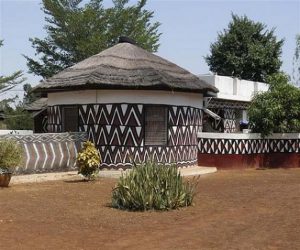
This state of affairs displeased Kpugnimbo and on a festive day, out of anger, Kpugnimbo attacked the tindana and killed him. He then took the regalia of the priest, adorned himself and commanded that he be enskinned as Tindana of the town, which the elders obliged. After the death of her father, Sihisabiga abandoned Kpuɣinimbo.
Malgimsim, Nyelgili and Namzisheli all left Biung to establish their homes.
In response, the Biung chief prepared to attack Kpugnimbo but when he finally gazed upon the fearsome, hairy giant, he resented his decision and made peace with him. To solidify their relationship, the Biung Chief gave his daughter, named Suhuyini to Kpugnimbo.
The daughter of the chief of Fadan-Gurima, Suhuyini gave birth to Ʒipupora. When Kpugnimbo passed on, ʒipupora succeeded his father as priest of Biung. Ʒipupora gave birth to two sons; Kumtili and Gbewaa.
Kumtili took over the mantle as the priest of Biung, after the demise of their father but died shortly after. Oral history has it that, when Gbewaa succeeded his brother, he decided to leave his motherland, in search of greener pastures due to famine and instability as a result of constant wars. Gbewaa, therefore, moved with his family to settle at Pusiga, in present-day Ghana.
It is important to state at this point that, the people of Fadan – Gurima spoke the Gurumah language; a branch of the Niger-Congo languages.
According to Britannica, ” Gurma, also spelled Gourma, also called Gurmanche, an ethnic group that is chiefly centered on the town of Fada N’Gourma in eastern Burkina Faso, although smaller numbers inhabit northern Togo, northern Benin, and southwestern Niger. They speak a language of the Gur branch of Niger-Congo languages.”

Naa Gbewaa And The Creation Of The Four Independent Mole Dagbon States
When Naa Gbewaa settled at Pusiga, he established a chieftaincy system, which became known as NAM. This chieftaincy system became a preserve of the male children of Naa Gbewaa. And under this system, one woman does not give birth to two lions. By implication, two sons of Naa Gbewaa, born from the same mother can not ascend the gbewaa skin.
The lion and the leopard become a significant part of the Gbewaa tradition, as Naa Gbewaa sat on the skins of the lion and leopard .

In Pusiga, Naa Gbewaa kept several wives and created a fairly stable society, and his progeny expanded and triumphed beyond his imagination.
Naa Gbewaa’s first daughter was kachagu (Kachaɣu) or fetɛɣu. Other children of Naa Gbewaa includes;
- Zirili
- Tohagu
- Shitɔbu
- ŋmantambo
- Kufogu
- Salaga Kayilikpera
- Yemtɔri ( Yenega)
- Beemoni
- Bugyeligu
- Kugnaa Subiɛ
- Zantaanilan Yirigintoli
- Lariwaayo
- Nyankpana
- Sanglan Subie bila
It is important to state here that, among Naa Gbewaa’s Children, Kachagu shared the same mother with Kufogu. Zirili and Tohagu were from the same mother, whilst Shitɔbu and ŋmantambo were born of the same mother.
According to Dagbon griots, At old age, Naa Gbewaa became blind. He then decided that it was time to choose his successor before he passed on.
It is said that Naa Gbewaa had so much affection for Kufogu’s mother to the extent that, he wanted her son ” Kufogu ” to be his successor, after his demise. So Naa Gbewaa confided in some of his elders, regarding this wish.
Destiny however took a different twist, when one of the elders revealed this to Zirili’s mother. Unable to contain the information, Zirili’s mother pretending to be kufogu’s mother went into Naa Gbewaa’s room and asked him, if indeed, the rumours that Naa Gbewaa has chosen ” her son, Kufogu” as heir to the Naa Gbewa skin? Thinking it was Kufogu’s mother, Naa Gbewa confirmed it to her.
Read More : The Traditional Dagbon Hats: Types, How It’s Worn And It’s Significance In Dagbon Kingdom
This very event marked the first upset in the demise of the Gbewaa family. Zirili’s mother confronted her son with the message and told him to stand up for himself as the eldest son.
In the process of standing up for himself, Zirili set a pit trap for his brother and Kufogu fell in there and died.
Legend has it that, when the news got to Naa Gbewaa, in his state of despair, he sunk deep into the ground. His grave at Pusiga is now a shrine.
In the midsts of the confusion, kufogu’s sister, Kachagu demanded that she takes the place of Naa Gbewaa, since she was also older than Zirili. This the agreed and Kachagu was enskinned.
But few days into her enskinment, Zirili contracted some men to stage a fake war. When Kachagu heard that war was coming to them, she abandoned the palace and fled.
Zirili then took over as King and sent messengers to look for his sister. When they saw Kachagu, she was hiding inside a hole in a kapok tree.
Zirili decided to enskin her as Queen of the kapok tree ( Gundu-Naa). The Gundu-Naa is a female chief of a town known as Gundogu ( Gundogu is a term used to describe a hole in a kapok tree).Until today, this title is still a preserve of female children of the Yaa-Naa.
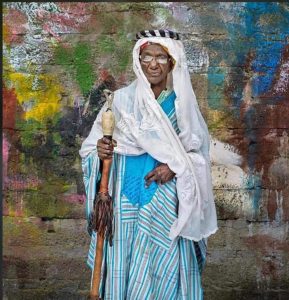
Princess Yemtori (Yenega) And The Formation of Mossi Kingdom
Unlike Kachagu, Yemtori, otherwise known as Yenega, was a brave female warrior. She followed her brothers into hunting and followed them into the battlegrounds.
It is said that, in one of their expeditions, Yemtori got separated from her brothers and wandered alone in dangerous forests.
She was later found by a brave hunter of the Bisa/Mandinka clan. (Tauxier, 1917). The Mandinka warrior and hunter sent her home and they were later united in marriage. And through their Union, the famous king of the Moore/Mossi ethnic group, Ouedraogo ( wedraogo) was born.
This is why the Mossis are playmates to the Dagbamba , mamprusi and Nanumba. The mossis are grandchildren of Naa Gbewaa through their mother, Yenega. Whilst the Dagbamba, Nanumba and Mamprusi come from male children of Naa Gbewaa.
Descendants of Ouedraogo also split into 4 and established their own kingdoms, namely Tenkodogo (zoungraantinga), Ouagadougou (Oubritenga),Yatenga, and Bousouma.
Each of them have their distinct chiefdom. Tenkodogo was founded by Ouedraogo and inherited by Zoungrana, Zoungraana’s son “Wubri” established Ouagadougou, wubri’s sons established Yatenga and Bousouma.
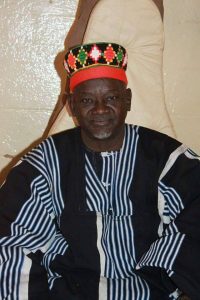
The Breakaway Of The Gbewaa Siblings
Around the 14th century, after the death of Zirili, his brother from the same mother, Tohagu, wanted to take over the Gbewaa skin. This was severely resisted by Shitobu and his brother, ŋmantambo, with the argument that, one woman does not give birth to two lions.
And since Zirili was his mothers son, Tohagu could possibly not ascend the Skin. In the heat of the succesion dispute, Tohagu fled from the Pusiga alongside his siblings and settled at present day Gambaga.
Having sperated himself, they were nick-named ŋmampirisi ( which literally means, the separatists ).
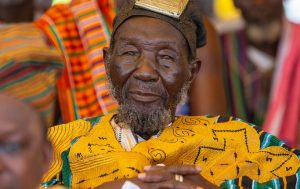
With Tohagu gone, Shitobu took over the Gbewaa skin and regalia. It is important to state here that, Shitobu’s triumph in the succession fracas was largely due to the fact that, he had so much support from his brother.
For this reason, he nicknamed himself “Yaa-Naa” ( King of power ).
This is the name that is still being used to address the Dagbon king to date. Shitobu also earned the appellation name ” Sigri ni tobu, duri ni nam” loosely translated as ” Descending with war and ascending as King “ This title is still bourn by the Yaa-Naa in his numerous appellations.
Shitobu and his followers settled at Pusiga for a while and he later decided to move from Pusiga. He settled at Nambrugu, near Kariga.
When Shitobu decided to move, his brothers, ŋmantambo, Bugyeligu, Beemoni and Kugu-naa Subei… all followes him.
Some of these brothers will later ascend important skins in Dagbon, when Naa Nyagse, son of Shitobu (sitobu) takes over.
ŋmantambo, the younger brother of Shitobu decided to explore further and this is what led to his movement from “Yani dabari” towards the east. It is said that his adventure took him beyond Bimbila, far into the Volta region and The Bono regions; conquering minor tribes who stood his way.
Oral history has it that, ŋmantambo had no intention of establishing his own kingdom. So at an old age, he decided to return to his brother’s land, but on the way home, he passed away and so his people decided to return back to Nanung for permanent settlement. His grave lies around Duuni, on the Yendi-Bimbila stretch . Today, the grave of ŋmantambo is a deity for the Nanumba.
Read More : The Resilience Of A King – The Fall & Rise of Bimbila Na Salifu

It is said that Naa Shitobu was still alive when he bequeathed the Gbewaa skin to his son, Naa Nyagse ( 1416 TO 1432).
After the death of Naa sitobu, his Son, Naa Nyagsi moved the capital of Dagbon to what is known today as ” Yani- Debari (Abandoned Yendi).
It is worth mentioning at this point that, when Naa Nyagse took over from his father, he called himself ” Yogtolana” ( king of the jungle). And the place wherever he settled became known as “yogtolandi” or ” Yogu( land of the lion king)
It is said that, one day, at the farm, Na Nyagse suddenly thought out the idea of expanding Dagbon and he abandoned his hoe at the farm and waged war against the aboriginal settlers, killing the Tindaamba, while installing his sons, uncles and friends as chiefs of those traditional areas, thereby bringing them under his authority.
He was seen as a king who caused so much destruction by the mamprusi and so they referred to him and his people as ” Yooba” ( termites ).
Today, in Ghana, the Mamprugu, Dagbon and Nanung, though are considered separate kingdoms, ruled by the Nayiri, Yaa-Naa and Bimbila Naa respectively, they still see each other as brothers from the same ancestry, through Naa Gbewaa.

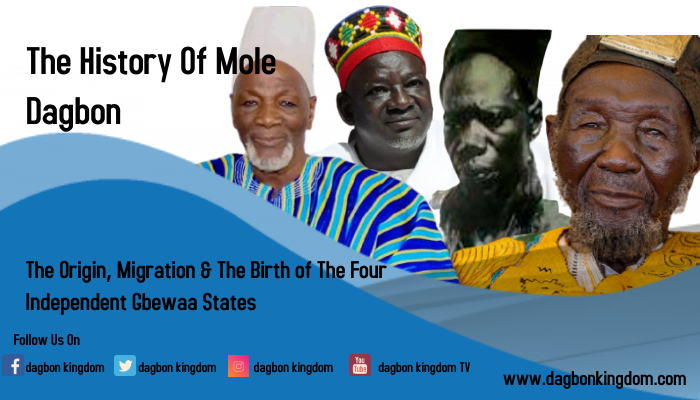


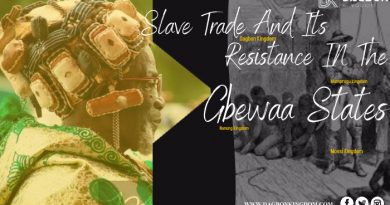
Naawuni pahimi a daalikalami tadabo. Ka kpaŋsi a nuchee. Ka niŋ alibarika n-niŋ yi wubsibu puuni.
Ti pagya mba bia
Pingback: Dagbani Proverbs - List Of Dagomba Proverbs and Their Meaning • Dagbon kingdom
Pingback: Top 10 Top Business Opportunities In Northern Ghana • Dagbon kingdom
Pingback: Dagbanli Cinema Launches an Online Dagbanli Movie Streaming Platform • Dagbon kingdom
Pingback: Dakpɛma Zosimli Naa: Tamale Dakpɛma Enskins Ms Kennedy S. Johnson • Dagbon kingdom
Pingback: Damba Festival: A Celebration Of Dagbon Royalty. • Dagbon kingdom
Pingback: History Part 1: Naa Zanjina and the creation of the three gate skins • Dagbon kingdom